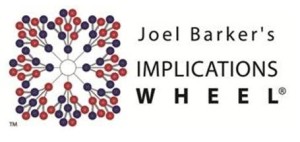Simplification, Complification or Obfuscation
As an experiment, this morning I searched the terms, “Pew Jewish demographic study 2013 failure” and “Pew Jewish demographic study 2013 success” on a variety of online sites. Numbers in red reflect a larger number of results.
What are my conclusions from this matrix?
- A survey finding is an objective snapshot of a moment in time. (Let’s ignore methodological issues that any survey generates.) It mayz reflect the beginning, middle or end of the movie, but it’s still just one moment of a subject frozen in the moment.
- To continue the analogy of survey finding as “snapshot,” you may rejoice or recoil at a picture. Your reaction to it depends upon your beliefs, knowledge, values and experience and says as much about you as it does the picture. Your reaction is immediate and subconscious and you’re not likely to analyze your feelings and thoughts unless you’re in a museum, a setting that invites quiet, thoughtful reflection.
- Reports as significant as A Portrait of Jewish Americans generate narratives within and outside of the Jewish community. We may have a preference of one narrative for Jewish consumption and another for more public consumption, because stories serve political interests.
- In a related vein, coverage (or relative lack thereof) of this report within the American Jewish press and the Israeli Jewish press have several subtexts, a significant one being the viability and vibrancy of Jewish life outside of Israel.
So I’m taking my time digesting the implications of the findings from the Pew Report, A Portrait of Jewish Americans. We’re going to feel the impact of this report for a long time. While the some of the findings are unambiguous and elicit a strong emotional reaction, those reactions don’t always make for thoughtful policy debates and decisions.
Another reason for a little more time—sometimes, demographics and trends are destiny, and other times we can’t extrapolate the future from the present. A well-known example: if Jews in the year 1900 in America or Europe had been surveyed by a highly-respected research organization about the likelihood of creating an independent Jewish state, how many would have responded that there was a high likelihood anytime soon? Yet, here’s what Theodor Herzl wrote in his diary after the first Zionist Congress in 1897: “If I had to sum up the Basel Congress in one word—which I shall not do openly—it would be this: At Basel I founded the Jewish state. If I were to say this today, I would be greeted by universal laughter. In five years, perhaps, and certainly in 50, everyone will see it.”
Survey findings in the Jewish community are notorious for generating anxiety without clear direction (more about that in a later post….). Careful sociologists, historians and demographers are incredibly valuable in providing us with information about the present and they can extrapolate possibilities about the future. We need to pay attention to them—in many cases, if we had, we might not be dealing with some tough issues in the Jewish community today. Yet, sometimes against the logic of the data, we have to strive mightily to create the future that we want because that’s what leaders do. So unlike what happened for a variety of reasons with the 1990 NJPS and the problematic NJPS 2000-2001, a little more time for analysis, interpretation and action will serve us better as a Jewish community.


